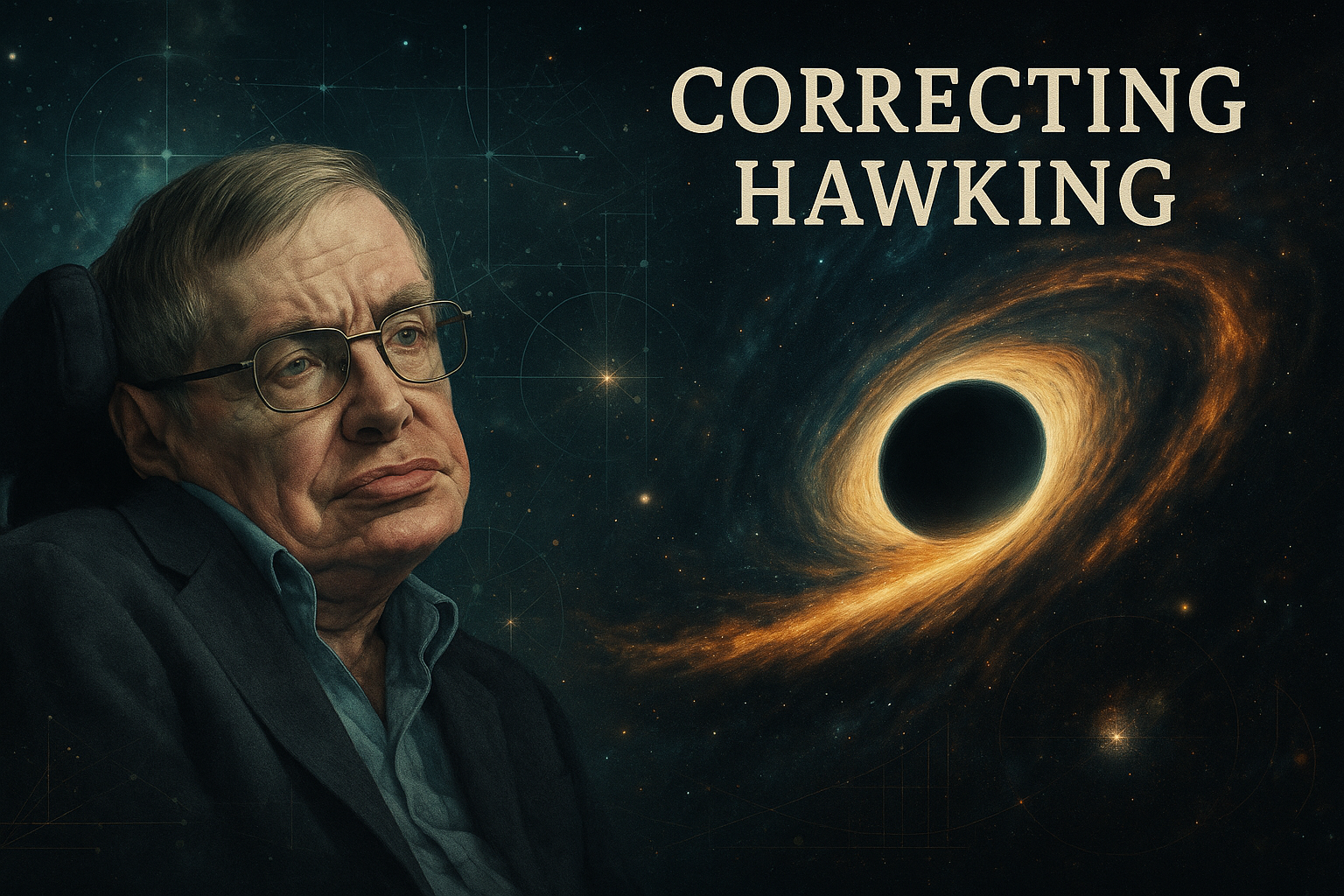Correcting Hawking’s Black Holes
Pattern Field Theory Challenges Hawking’s Black Hole Paradoxes

Why Hawking’s Black Hole Theory Requires Revision
Stephen Hawking’s model proposes that black holes emit radiation, gradually evaporating and raising the information paradox: quantum mechanics forbids information loss, yet Hawking radiation suggests it. Classical singularities further challenge physical law. Pattern Field Theory™ (PFT) reframes these issues by interpreting black holes as regions of extreme pattern loading rather than true singularities.
The Problem with Standard Black Hole Theory
- Predicts central singularities where mathematical structure collapses.
- Implies information destruction, contradicting quantum requirements.
- Models spacetime as a smooth continuum, conflicting with discrete field structures.
Pattern Field Theory’s Interpretation
PFT describes black holes as replication-stress zones where pattern density exceeds local anchoring capacity. Information is never erased; it is transformed and redistributed through structured field interactions. Curvature, force, and radiation are emergent expressions of underlying pattern tension and coherence transitions.
Hawking Radiation Reinterpreted
In PFT, Hawking radiation represents a resonant release of accumulated pattern tension. The classical expression for Hawking temperature remains measurable:
Where:
- T_H = Hawking temperature
- M = black hole mass
- k_B = Boltzmann constant
PFT views this not as quantum pair-production at the horizon but as a surface-level expression of deeper pattern rebalancing dynamics.
Anchoring Operator and Information Preservation
The Anchoring Operator formalizes how information-bearing structures remain coherent even under extreme conditions:
Where:
- \lambda = anchoring strength
- \Psi = current pattern state
- P = local potential-field density
- \langle P | \Psi \rangle = resonance measure between pattern state and potential structure
Through this mechanism, PFT preserves continuity of information by stabilizing transitions between high-curvature regimes.
Conceptual Advantages of the PFT Model
- Eliminates singularities through structured field logic.
- Preserves information, resolving the paradox without violating quantum theory.
- Integrates discrete pattern fields with emergent curvature.
- Includes the observer-pattern as part of the stability dynamics.
Conclusion
PFT respects Hawking’s contributions while advancing a more structurally coherent model. Black holes become zones of pattern transformation rather than endpoints of physics. Information remains conserved, curvature emerges from field tension, and the universe maintains logical continuity throughout even its most extreme regions.